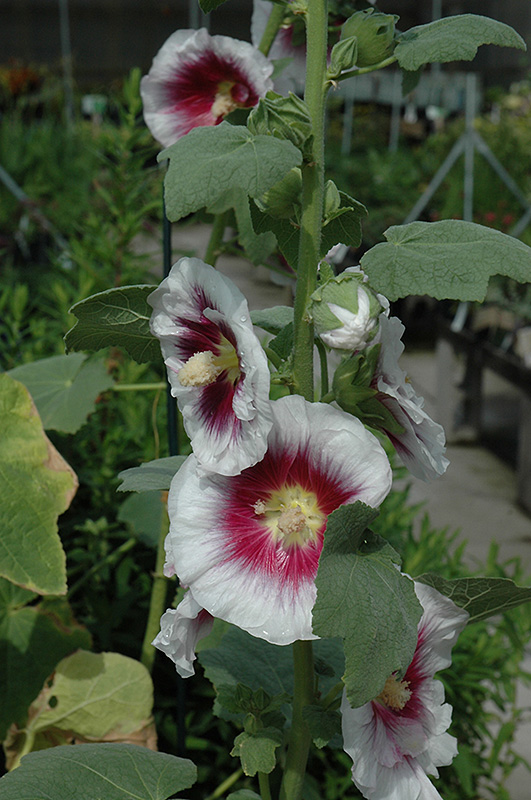VANDERMEER
PLANT LIBRARY
Find the perfect plant for your space by browsing through this extensive selection that we typically carry every year.
This library is for information purposes only.
Creme de Cassis Hollyhock
Alcea 'Creme de Cassis'
Plant Height: 24 inches
Flower Height: 6 feet
Spread: 24 inches
Sunlight:
![]()
Hardiness Zone: 2a
Description:
Stunning large flowers of deep raspberry, edged with white, bloom from summer to fall; a perfect addition to garden beds and cut flower arrangements; tall upright stalks feature single, semi and double blooms all on one plant
Ornamental Features
Creme de Cassis Hollyhock features bold spikes of semi-double white round flowers with yellow eyes and ruby-red centers rising above the foliage from mid summer to early fall. The flowers are excellent for cutting. Its large round leaves remain green in colour throughout the season.
Landscape Attributes
Creme de Cassis Hollyhock is an herbaceous biennial with a rigidly upright and towering form. Its relatively coarse texture can be used to stand it apart from other garden plants with finer foliage.
This plant will require occasional maintenance and upkeep, and should only be pruned after flowering to avoid removing any of the current season's flowers. It is a good choice for attracting bees to your yard, but is not particularly attractive to deer who tend to leave it alone in favor of tastier treats. Gardeners should be aware of the following characteristic(s) that may warrant special consideration;
- Disease
- Self-Seeding
Creme de Cassis Hollyhock is recommended for the following landscape applications;
- Vertical Accent
- Mass Planting
- General Garden Use
Planting & Growing
Creme de Cassis Hollyhock will grow to be about 24 inches tall at maturity extending to 6 feet tall with the flowers, with a spread of 24 inches. Its foliage tends to remain dense right to the ground, not requiring facer plants in front. The flower stalks can be weak and so it may require staking in exposed sites or excessively rich soils. It grows at a fast rate, and tends to be biennial, meaning that it puts on vegetative growth the first year, flowers the second, and then dies. However, this variety tends to self-seed and will thereby endure for years in the garden if allowed, although because it is a hybrid, the seedlings may not come true to type.
This plant should only be grown in full sunlight. It does best in average to evenly moist conditions, but will not tolerate standing water. It is not particular as to soil type or pH. It is highly tolerant of urban pollution and will even thrive in inner city environments. This particular variety is an interspecific hybrid.





